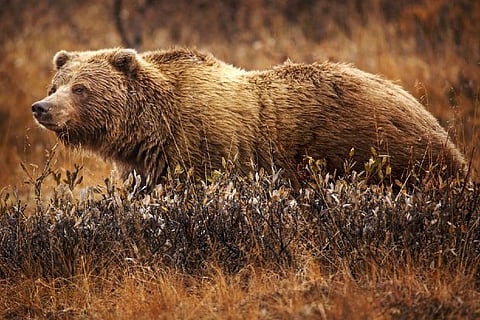

Chennai
The study, which involved wild and captive bears, a specialised treadmill, apple slices and GPS trackers, expands our understanding of how a natural drive to save energy shapes animals’ behavior, including ours, and could have implications for health and weight management. The findings also help explain why, in the great outdoors, the paths of bears and people so often intersect, providing useful reminders about wilderness planning and everyone’s safety. Biologists and other scientists have become increasingly interested in recent years in how we and other creatures make our way through our surroundings. And while some preliminary answers have begun to emerge about why we choose to move and navigate as we do, the findings are not, on the whole, especially flattering. Accumulating research suggests that we humans, as a species, are apt to be physically lazy, with a hard-wired inclination to avoid activity. In a telling 2018 neurological study, for example, brain scans indicated that volunteers were far more attracted by images of people in chairs and hammocks than of people in motion.
This apparently inborn preference for not moving made sense for us once, long ago, when hunting and gathering demanded hard effort and plentiful calories and resting under a tree did not. Being inactive is more problematic now, with food everywhere. But the extent to which we share this penchant for physical ease with other species and whether these predilections affect how we and they traverse the world has remained unclear. So, cue grizzlies, particularly those living at the Washington State University Bear Center, the nation’s primary grizzly bear conservation and research center. University biologists affiliated with the center study how the animals live, eat and interact with humans.
Now, for the new study, which was published recently in the Journal of Experimental Biology, they decided to explore precisely how much energy grizzlies expend when they move in different ways and how those and comparable numbers might affect real-life behavior, not only of bears but of us and other animals. To start, they constructed a sturdy enclosure around a treadmill originally built for horses. With modifications, it could tip up or down by as much as 20%, while handling the size and weight of a grizzly. At the front of the enclosure, the scientists added a feeding box with a built-in rubber glove.
Then they taught the centre’s nine male and female grizzlies — most of them resident at the center since birth and sporting names like John, Peeka and Frank — to clamber onto the treadmill and walk, while sedately accepting slices of hot dogs and apples as a reward. “Grizzlies are very food driven,” says Anthony Carnahan, a doctoral candidate at Washington State University who led the new study. Comparing the data, the scientists found that wild grizzlies, like us, seem born to laze. The researchers had expected the wild bears to move at their most efficient speed whenever possible, Carnahan said. But in reality, their average pace traveling through Yellowstone was a pokey and physiologically inefficient 1.4 mph. They also almost invariably chose the least-steep route to get anywhere, even when it required extra time.
Reynolds is a reporter with NYT©2021
The New York Times
Visit news.dtnext.in to explore our interactive epaper!
Download the DT Next app for more exciting features!
Click here for iOS
Click here for Android